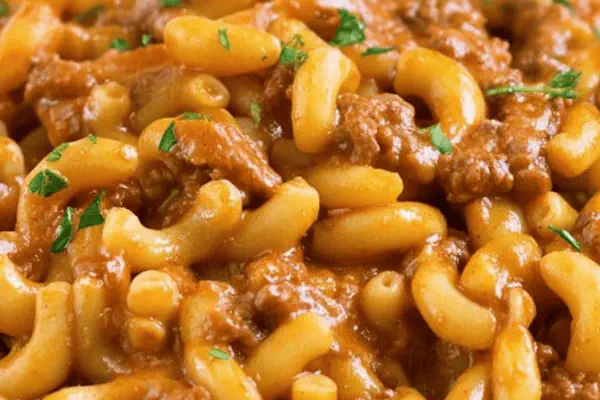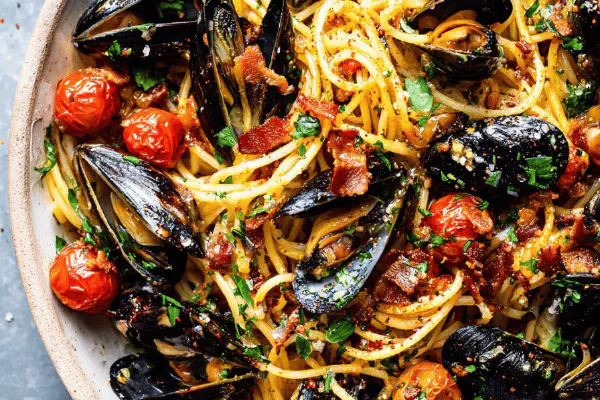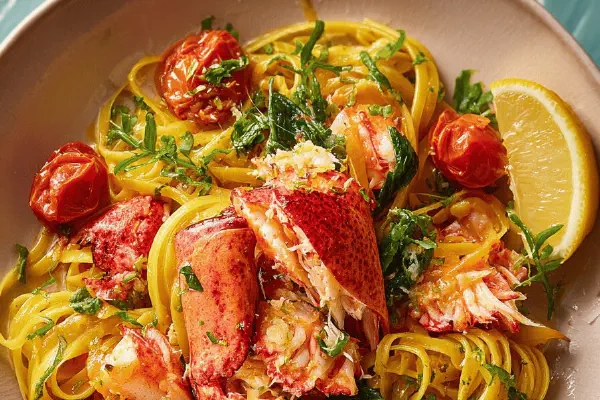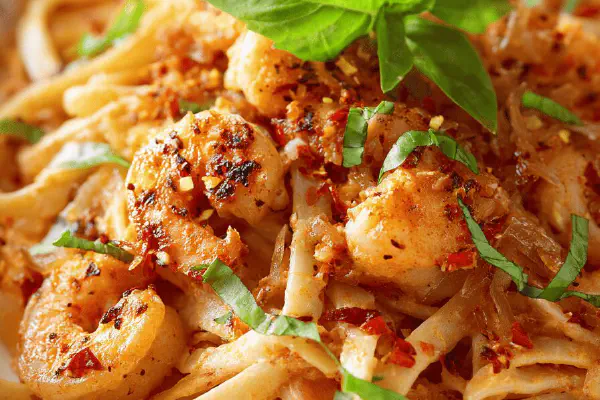Spaghetti Jambalaya Twist
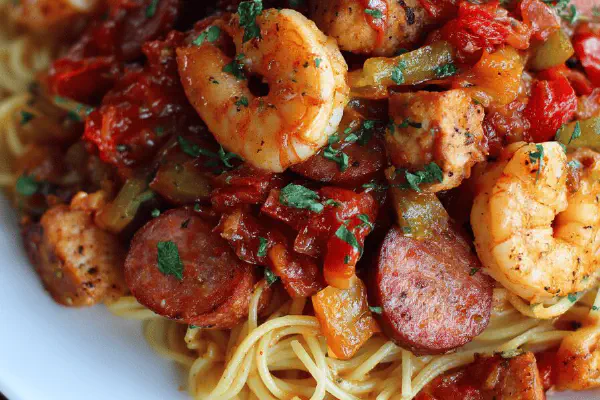
By Emma
Certified Culinary Professional
Ingredients
- 400 g spaghetti
- 1 skinless boneless chicken thigh diced
- 1 Andouille sausage about 120 g, sliced
- 50 ml olive oil
- 1 large onion thinly sliced
- 1 medium red bell pepper seeded, diced
- 2 celery stalks thinly sliced
- 3 garlic cloves finely minced
- 5 ml dried thyme
- 5 ml smoked paprika
- A pinch cayenne pepper optional
- 40 ml fresh lemon juice
- 800 ml chunky tomato sauce homemade or store bought
- 400 g peeled deveined shrimp
- 70 ml chopped flat-leaf parsley
- Salt and freshly ground black pepper
About the ingredients
Method
- Start boiling salted water for pasta. Toss in spaghetti, stir occasionally. Watch for firm bite not mushy, likely 8-10 minutes depending on brand. Drain carefully, drizzle a touch of oil so strands don’t stick; set aside, loosely covered.
- Heat oil over medium-high in a large skillet until slight shimmer appears. Chuck in chicken thigh pieces; golden crust, then add Andouille sausage slices. Both should sizzle loudly, cook till edges char slightly for that smoky hint. Remove from pan, let rest on plate.
- Use same pan, add onions, bell pepper, celery. Constant stirring helps even softening. Veggies soften and start smelling sweet and faintly spicy, about 6-8 minutes. Don't burn; add splash olive oil if pan dries. Stir in garlic, thyme, smoked paprika, cayenne. Cook one minute until fragrant and aromatic. Salt and pepper now, best time to layer seasoning.
- Splash lemon juice in pan to deglaze—fuels the fond release. Scrape those browned bits up; big flavor here. Return chicken and sausage to skillet. Pour in tomato sauce, stir well to combine. Bring to gentle simmer, bubbles rising steadily but not rolling. Add shrimp; they'll curl and pink up quickly, about 3 minutes. Shrimp overdone? Rubber city—get them off heat when just opaque.
- Fold cooked spaghetti into sauce carefully. Stir gently to coat every strand, sauce thick enough to cling but not gluey. Adjust salt, pepper final taste test. Let sit off heat a few minutes for flavors to marry and pasta soak subtle juices.
- Serve sprinkled with parsley, a fresh green pop and slight herb bitterness cuts richness.
Cooking tips
Chef's notes
- 💡 Cook pasta just shy of al dente; absorbs sauce without mush. Stir often when boiling to avoid clumps. Splash little oil after draining; strands stay separate, no glue. Timing here sets the foundation; drying pasta ruins texture fast.
- 💡 When frying sausage and chicken thigh, listen for sizzle. Golden crust forms quickly, edges darken for smoky notes. Rest meat after cooking; juices redistribute. That prep develops fond, which flavors the sauce; skip browning and sauce falls flat.
- 💡 Veggies need patience. Stirring constantly prevents burning but caramelization barrels flavor. Onions, celery, peppers soften and get sweet with faint spice hints. Garlic and herbs tossed in later; add too soon, bitterness scars dish with burnt garlic taste.
- 💡 Deglaze with lemon juice not vinegar; acidity lifts pan fond gently. Scrape browned bits well; that’s flavor depth. Adding shrimp last limits rubber texture. Watch color shift, from translucent to opaque pink signals doneness; overcooked shrinks to tough rubber.
- 💡 Fold pasta carefully into sauce. Coat each strand but don't mash. Sauce consistency matters; thick enough to cling but no clumps, no glue. Salt and pepper tweak last; tomato base varies widely. Resting off heat settles flavors, pasta soaks subtle juices. Parsley finishes bright and slightly bitter.
Common questions
Can I substitute chicken breast?
Yes, but dry cuts fast. Thigh is juicier, better for braise. If breast, watch heat; slice thin. Might add slight rubber if overcooked, variable moisture retention.
What if sauce thickens too much?
Add splash water or broth. Stir through to loosen. Simmer to reduce excess water if too runny. Sauce texture affects coating and balance. Slow adjustments better than quick fixes.
How to prevent shrimp rubberiness?
Cook shrimp last, brief time. About 3 minutes max after sauce simmers gently. Pull off heat once pink and curled; translucent edges gone. Overcooking shrinks flesh, turns chewy rubber. Size matters; adjust time accordingly.
Proper storage for leftovers?
Cool soon, refrigerate in sealed container. Reheat gently with splash water or broth to loosen sauce. Freezing breaks texture, better fresh. Use within two days for decent quality. Pasta tends to stiffen when cold.
